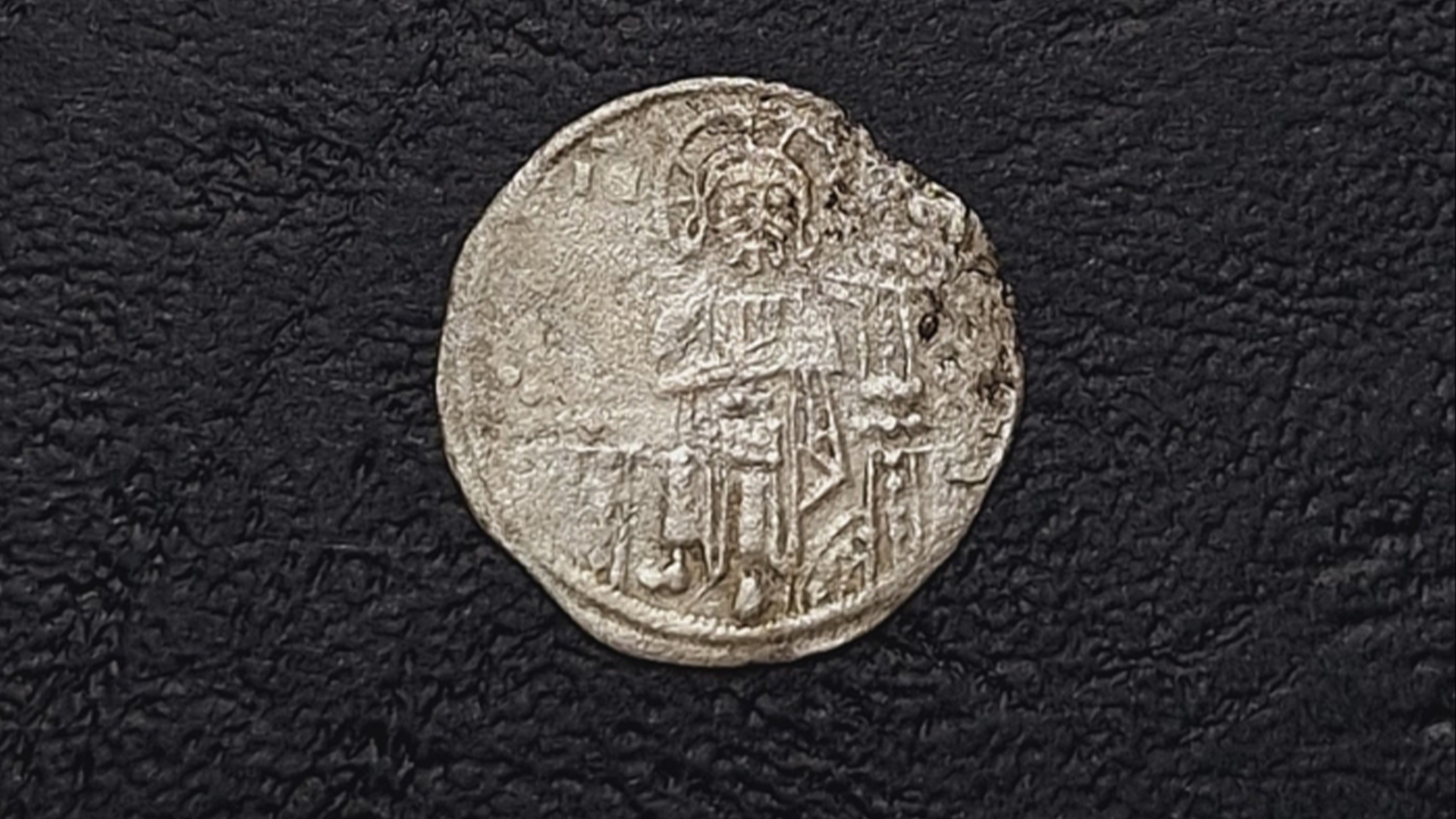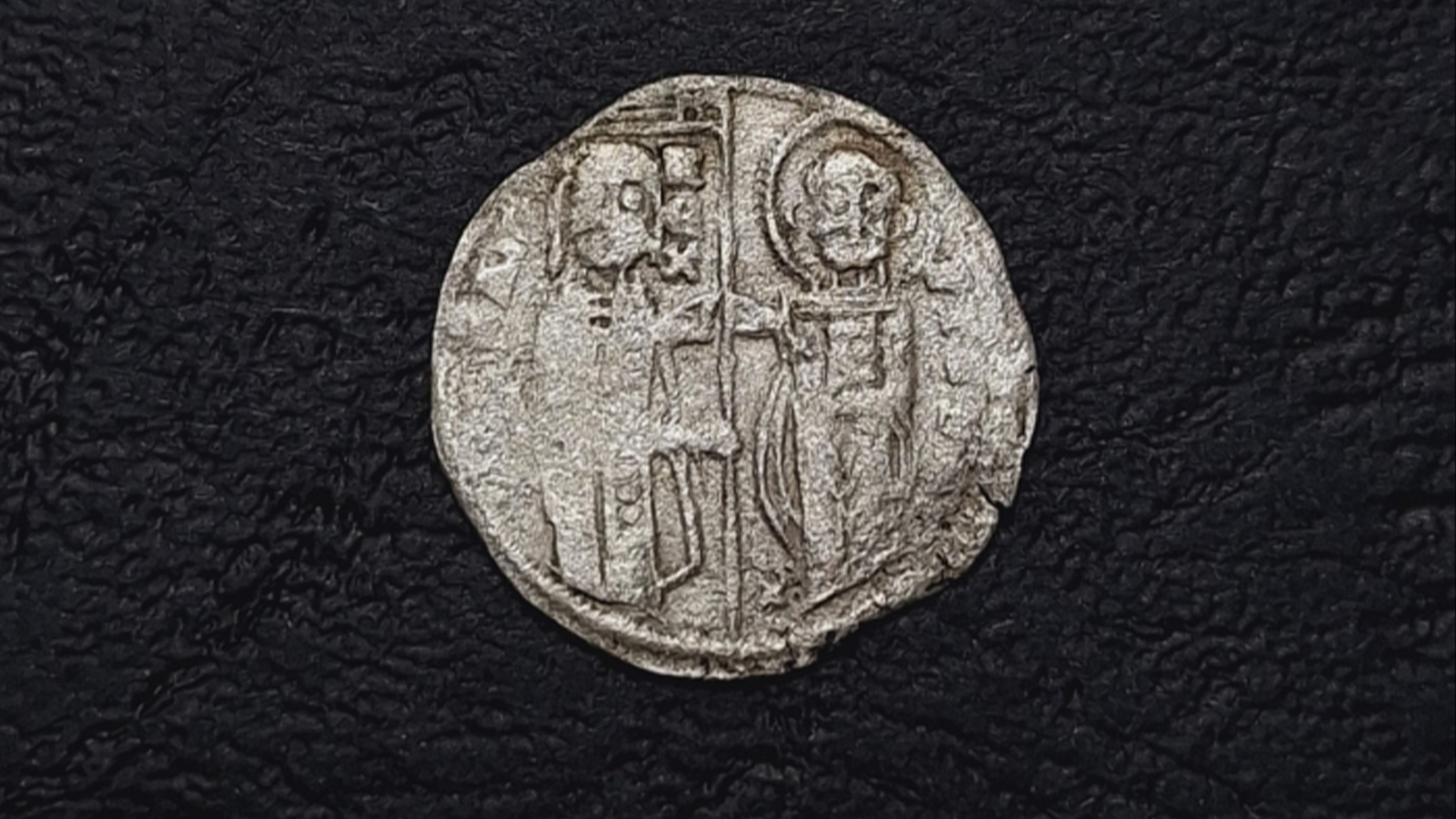700-year-old coin depicting Jesus and medieval king discovered in Bulgaria
Archaeologists in Bulgaria have discovered a medieval silver coin that features a Serbian king and a saint on one side and Jesus on the other.

Archaeologists in Bulgaria have discovered a 700-year-old silver coin depicting Jesus on one side and a Serbian king on the other in the southeastern village of Rusokastro.
One side of the so-called "silver penny" depicts Stefan Uroš II Milutin, a king of Serbia who greatly expanded his kingdom, alongside St. Stephen, the Burgas Museum, whose archaeologists are excavating the site, said in a statement translated from Bulgarian. The depiction of Jesus seated is shown on the other side of the coin. St. Stephen, who lived in the first century and was killed for his beliefs, was named a deacon by the 12 apostles.
This is the first time this type of coin has been found in Rusokastro, which was a town with a fortress at the time the coin was minted. The discovery shows that the coin had a larger circulation than previously realized archaeologists said in the statement.
Stefan Uroš II Milutin (reign 1282 to 1321) vastly expanded the Serbian kingdom into southeastern Europe, the statement said. He was married as many as five times, and one of his wives was a Bulgarian princess. Milutin, also known as Holy King Milutin, was later canonized as a saint, and today his relics are kept in St. Nedelya Church in Bulgaria's capital, Sofia.
Parts of the coin's design are copied from coins that were minted in Venice. "As for the Christ, this coin is a direct copy of the seated Christ on Venetian coins," Julian Baker, an assistant keeper of medieval and modern coins at the Ashmolean Museum of Art and Archaeology in Oxford, England who is not involved in the excavations, told Live Science in an email. Coins from Venice had a reputation as one of the most stable currencies in the Middle Ages for the consistency of their silver weight, the statement said.
Venetian coins started showing a seated Jesus during the late 12th century and copied a similar image that was used in coins minted in the Byzantine Empire, Baker said. He added that "the seated Christ became a very prominent iconographical device from the 9th/10th" centuries and it is "no great surprise" that it is shown on coins.
Sign up for the Live Science daily newsletter now
Get the world’s most fascinating discoveries delivered straight to your inbox.

This particular coin, with Jesus on one side and Stefan Uroš II Milutin on the other, is not unusual, Baker said. "This is quite a common coin produced by the medieval Serbian kingdom in a period in which they were able to mint coinage in large quantities thanks to the [silver] mines which [were] on its territory," Baker said. "Such coins are very commonly found in the southern Balkans, mostly in the western half" in countries such as Serbia and Greece, Baker said. "A find from eastern Bulgaria is a bit less usual but is still completely understandable."
Jesus was often shown on medieval coins and, at times, some scholars have interpreted the seat he sits on as being a throne.
Excavations at the site and analysis of the artifacts are ongoing.

Owen Jarus is a regular contributor to Live Science who writes about archaeology and humans' past. He has also written for The Independent (UK), The Canadian Press (CP) and The Associated Press (AP), among others. Owen has a bachelor of arts degree from the University of Toronto and a journalism degree from Ryerson University.









